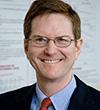|
Join us for this month's webinar. The webinar features presentations and interactive discussions including recent findings and new developments in children’s environmental health.
Featured Speakers:
 Richard Fenske Richard Fenske
University of Washington
Presentation Title: Passive Air-Sampling Methods with Community-Based Participatory Research in Yakima Valley, Washington
Presentation Summary: Passive air sampling methods were developed to measure organophosphorus insecticides and their transformation byproducts such as the more toxic oxygen analogs (oxons) in agricultural communities. Higher proportions of oxons were identified in air, particularly in samples further from potential sources of application and during times of increased cumulative solar radiation.
 Robert McConnell Robert McConnell
University of Southern California
Presentation Title: Near-Roadway Air Pollution, Obesity and Metabolic Consequences
Presentation Summary: Emerging evidence indicates that outdoor air pollution plays a role in obesity and its metabolic consequences, the major focus of the new Southern California Children’s Center. Preliminary results from the Center will be presented showing associations of near-roadway pollution and trajectories of growth of body mass index.
 Katharine Hammond Katharine Hammond
University of California, Berkeley
 Elizabeth Noth Elizabeth Noth
University of California, Berkeley
Presentation Title: Traffic-Related Air Pollution and Children's Health in California's San Joaquin Valley
Presentation Summary: While air pollution has been known to cause adverse health effects for some time, the Children’s Health and Air Pollution Study in the San Joaquin Valley (CHAPS-SJV) is probing deeper to explore the mechanisms of how specific pollutants affect a range of outcomes. Going beyond studying the criteria air pollutants measured at a single central site since the 1970s, CHAPS-SJV maps the spatial distribution of these air pollutants, black carbon and polycyclic aromatic hydrocarbons (PAHs) within Fresno and evaluates the daily exposure of each person separately. This detailed exposure assessment has contributed to our understanding the associations between specific air pollutants and outcomes ranging from preterm birth, birth defects, wheeze, allergies, to epigenetic effects at the cellular level which impair the immune system.
 Gregory Diette Gregory Diette
Johns Hopkins University
Discussion Moderator
|





